Managing a Hunched Upper Back - Exercises, Causes & Types
Even with ergonomic desks and back support
for your driving seat and couch, a hunched forward upper back is all too
common nowadays. Apart from it being unappealing, this posture can
cause back pain, reduce your breathing capacity, and even diminish
balance. Hence, taking care of this problem is certainly worthwhile for
both your health and confidence.
In medical terms, an excessive outward curve of the spine is referred to
as hyper-kyphosis, or simply kyphosis. This article focuses on the
types, symptoms, and treatments for kyphosis, including a few simple
exercises that target the condition.
What is kyphosis?
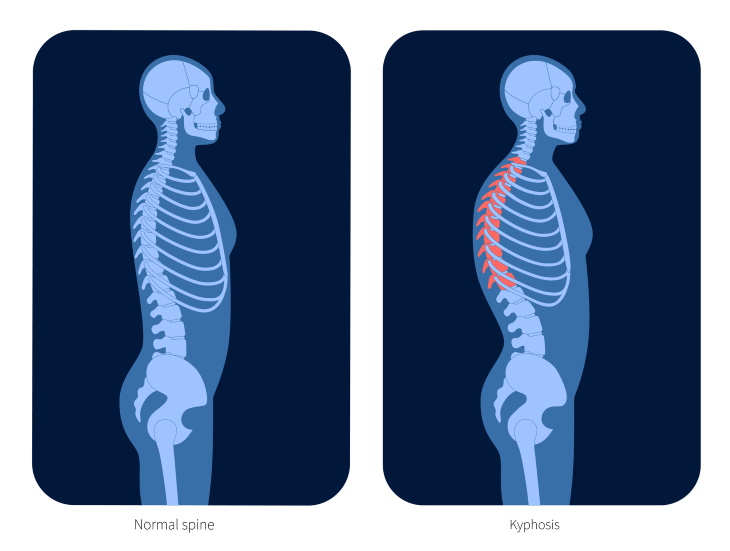

The term kyphosis can be somewhat
ambiguous, as it indicates any outward curve of the spine - ranging from
normal to exaggerated. A small curve in the thoracic spine is healthy,
but that’s not the type of kyphosis we’ll be referring to here. In this
article, we’ll be discussing the excessive curvature in the spine that
creates a hunched upper back when we write ‘kyphosis.’ It is this type
of kyphosis that makes the spine fragile or painful.
Symptoms of kyphosis
Kyphosis can be very bothersome, as it weakens the vertebrae and makes
them compress and possibly even crack. The C-shaped forward curve in the
upper spine is the primary sign of kyphosis. The shoulders are often
rounded and move forward. Back pain - either in the upper, middle, or
lower back - is also very common. In addition, around 40% of people with
kyphosis have a vertebral fracture caused by vertebral compression.
Other symptoms are:
Tenderness and stiffness in the upper back
Fatigue
Tight hamstrings
Digestive problems
Difficulty breathing.
Types of kyphosis
Kyphosis can affect anyone irrespective of age or gender. That being
said, certain types of kyphosis are more likely to impact some people
than others. Below we review 4 common types of hyper-kyphosis:
1. Postural kyphosis
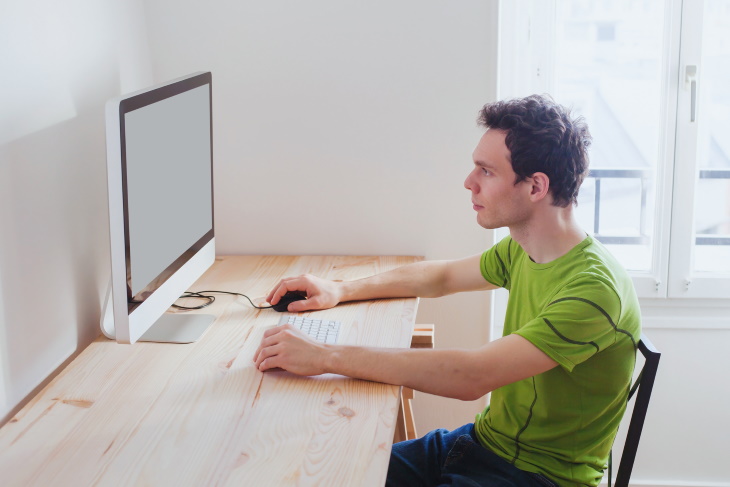

Postural kyphosis is the most widespread
form of kyphosis. Oftentimes, it starts in the teenage years, when
slouching makes upper back muscles develop unevenly. Slouching
exaggerates the forward curvature of the spine and weakens certain
muscles and ligaments.
Postural kyphosis usually occurs in:
Teens
Adults aged 40 and older
Females.
Though not commonly painful, acute postural kyphosis can sometimes
trigger back pain. Depending on the severity of the condition and the
patient’s age, postural kyphosis is usually treated with physical
therapy, and kyphosis correction surgery to correct the deformity.
Surgery is reserved for severe kyphosis, as it’s quite serious.
2. Age-related kyphosis
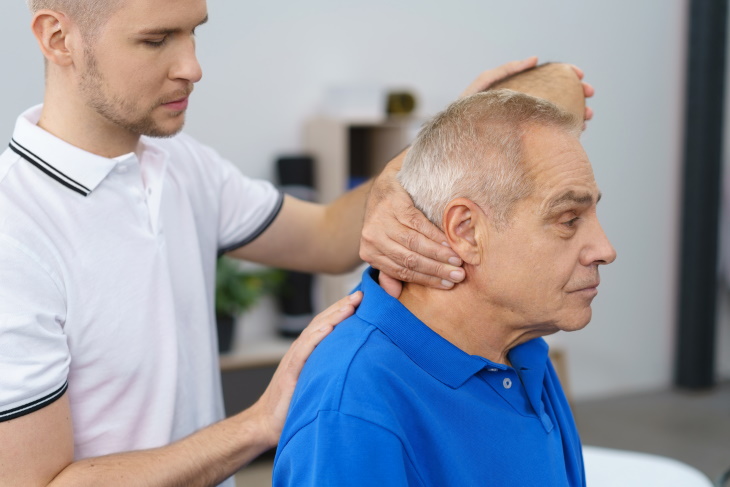

As the name suggests, age-related kyphosis
occurs in older adults, especially in those suffering from arthritis,
disc degeneration, or osteoporosis. Women after menopause are more
likely to develop age-related kyphosis, as low estrogen levels make
osteoporosis more likely.
The condition tends to get worse over time, but its progression and
onset can be halted, particularly in women, by increasing levels of
vitamin D and calcium, as well as low-impact exercises like walking,
swimming, weather aerobics, and stationary bicycling.
3. Scheuermann’s kyphosis
Named after the Dutch surgeon Holger
Scheuermann who first described the disease, Scheuermann’s kyphosis is
often severely disfiguring and painful. Scheuermann’s kyphosis is first
diagnosed during adolescence - typically between 13-16 years of age. The
cause of this disease is unknown, but males are twice more likely to
develop Scheuermann’s kyphosis than females.
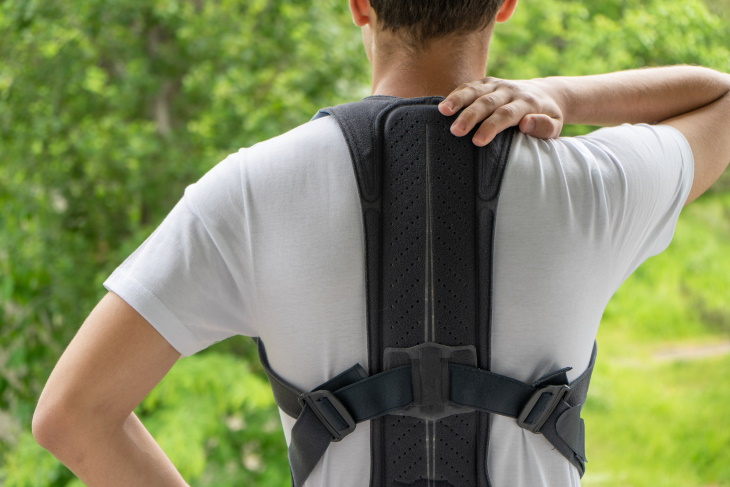

Scheuermann’s kyphosis creates a structural
deformity of the vertebrae. Instead of the usual rectangular shape,
some vertebrae become wedge-shaped and weaker. This can lead to pain in
the upper and lower back.
When Scheuermann’s kyphosis is no greater than 70 degrees, it’s usually
treated by wearing a brace and physical therapy, especially in
adolescents. “In many cases, if the kyphotic angle measures more than 75
degrees, corrective surgery is required,” said Dr. Nikhil Jain, a
neurosurgery spine expert, to Reader’s Digest. This surgery, called an
osteotomy, involves straightening and stabilizing the spine with metal
rods and screws.
4. Congenital kyphosis
Seen immediately after birth, congenital kyphosis is very rare. The
condition occurs when the spinal column does not develop normally before
birth, and the bones are either fused or haven’t formed completely.
Newborns with congenital kyphosis can have certain organ birth defects
too, and the condition can rapidly worsen with age.
Physical therapy is implemented to build core body strength, promote leg
and shoulder flexibility, and prevent the progression of the disease.
Surgical procedures are also used in more severe cases.
Complications of kyphosis
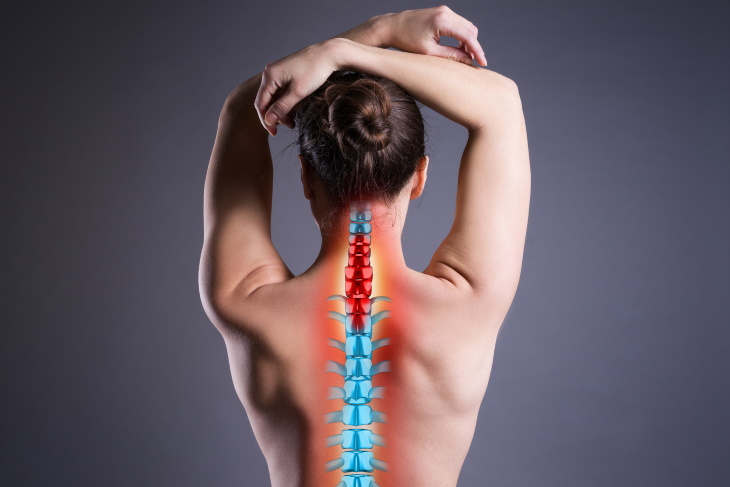

Severe cases of kyphosis can deform the
thoracic spine, compress the spinal cord, and pinch spinal nerves, which
can lead to a lot of serious complications, namely:
An irreversible curvature in the back
Balance problems
Weakness in the arms and legs
Continuous back pain
Breathing problems
Heart issues
Loss of bladder control.
If you experience any of these symptoms, seek medical help.
Exercises for kyphosis
Exercise will improve your posture and help your hunched upper back. A
2019 meta-analysis confirms that exercise can have a positive effect on
the angle of kyphosis, strengthen muscles, and stretch the back.
Maintaining a healthy posture while sitting at the desk, driving, or
even gardening can also be immensely helpful.
Here are a few upper back kyphosis exercises to try:
Knees-to-chest stretch
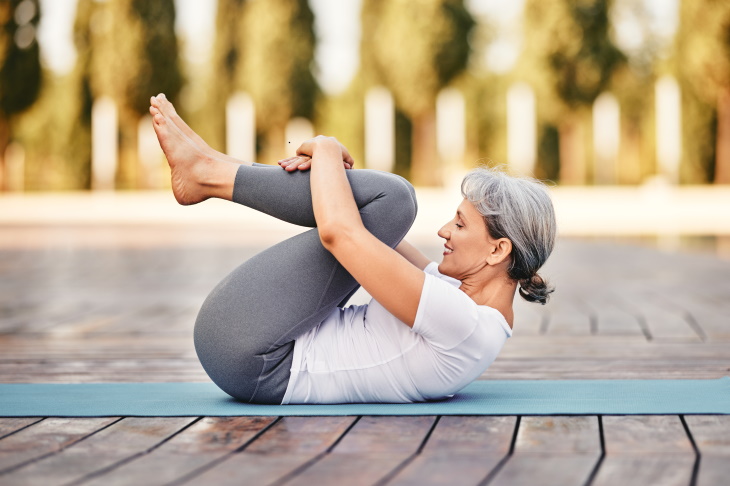

1. Lie down on your back, legs and arms
extended.
2. Bend the knees and place your hands on the knees.
3. Use the hands to guide your knees up and towards the chest. Your
knees and chest don’t have to touch, but you should feel a gentle
stretch in the back body.
4. Lift the head and neck off the ground and move towards your knees,
engaging your core muscles.
5. Breathe deeply and hold this pose for 20 seconds. Then return to the
initial position. Repeat if necessary 2-3 times.
Pelvic tilts
1. Lie down on the floor with knees bent and feet flat on the floor.
2. Start arching the back, but keep the glutes and upper back flat
against the ground.
3. Hold 5-10 seconds, then return to the initial position.
4. Repeat 5-10 times.
Knee rolls
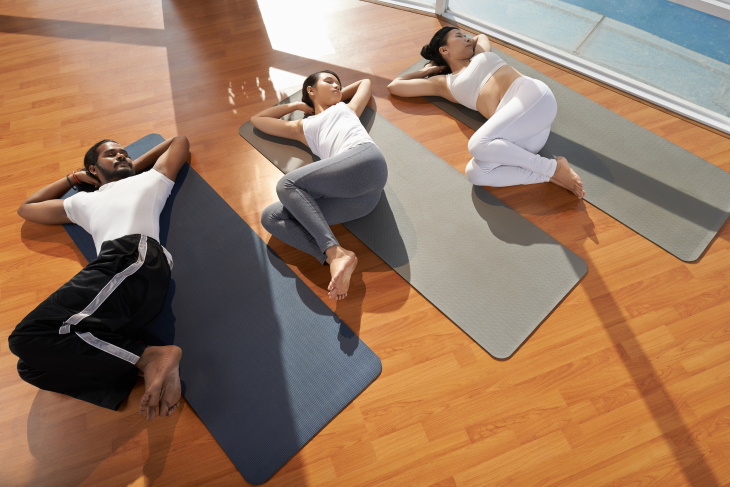

1. Lie down on the floor with knees bent
and feet flat on the floor.
2. Move the knees to one side until the skin of the back feels tight.
3. Return to the initial position, then move to the other side.
4. Repeat 3-5 times on both sides.
Head retraction
1. Lie down on the floor with knees bent and feet flat on the floor.
2. Pull the chin back, moving it toward the floor, as if you were trying
to show a double chin. This move strengthens and stretches the neck.
3. Hold for 10-15 seconds. Then return to the initial position.
4. Repeat 5-10 times.
Superman
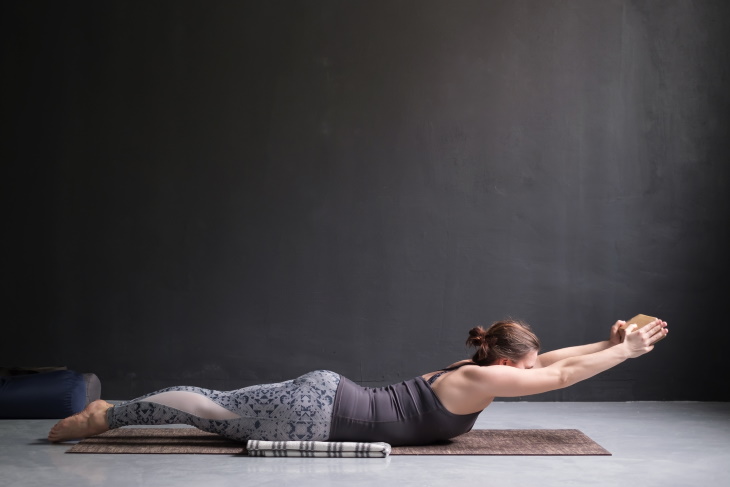

1. Lie down on your stomach, extending the
arms out to the side in a T, with palms facing down.
2. Keeping the head in a neutral position. Look toward the floor, then
lift both arms and legs up slightly. Press your chest and abs towards
the floor for balance
3. Hold for 3 seconds, then return to the initial position.
4. Repeat 8-10 times.